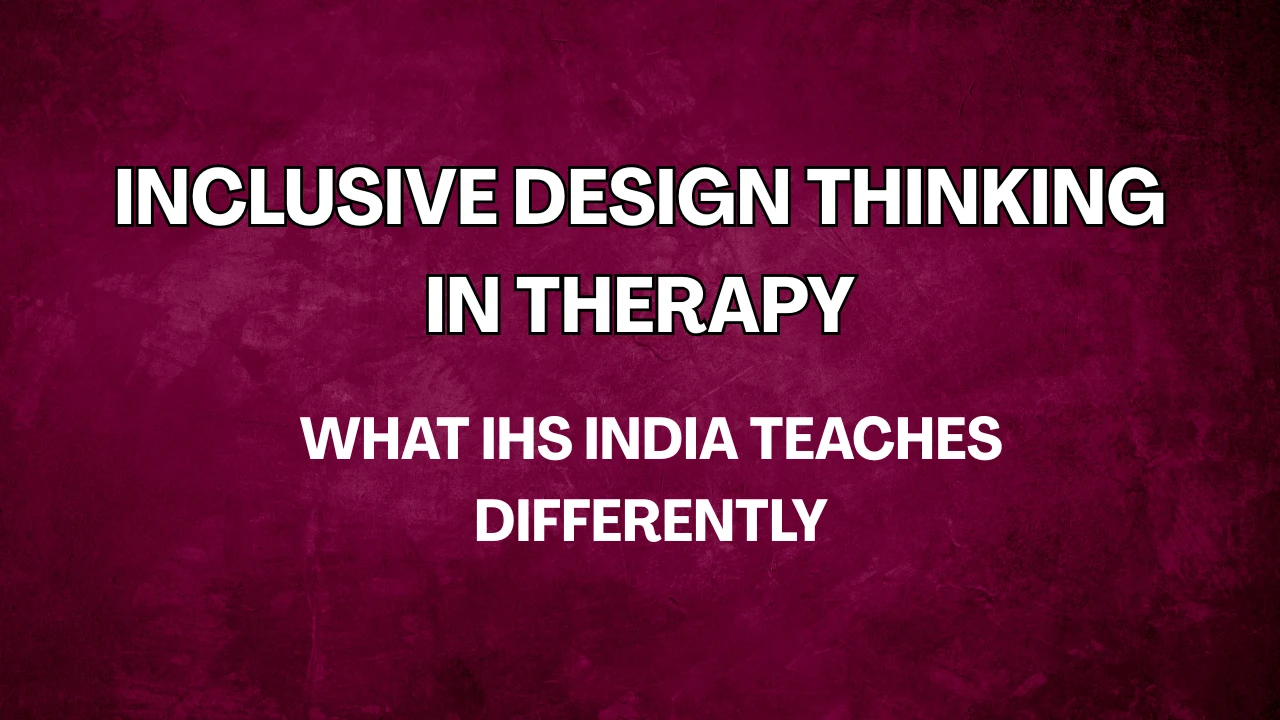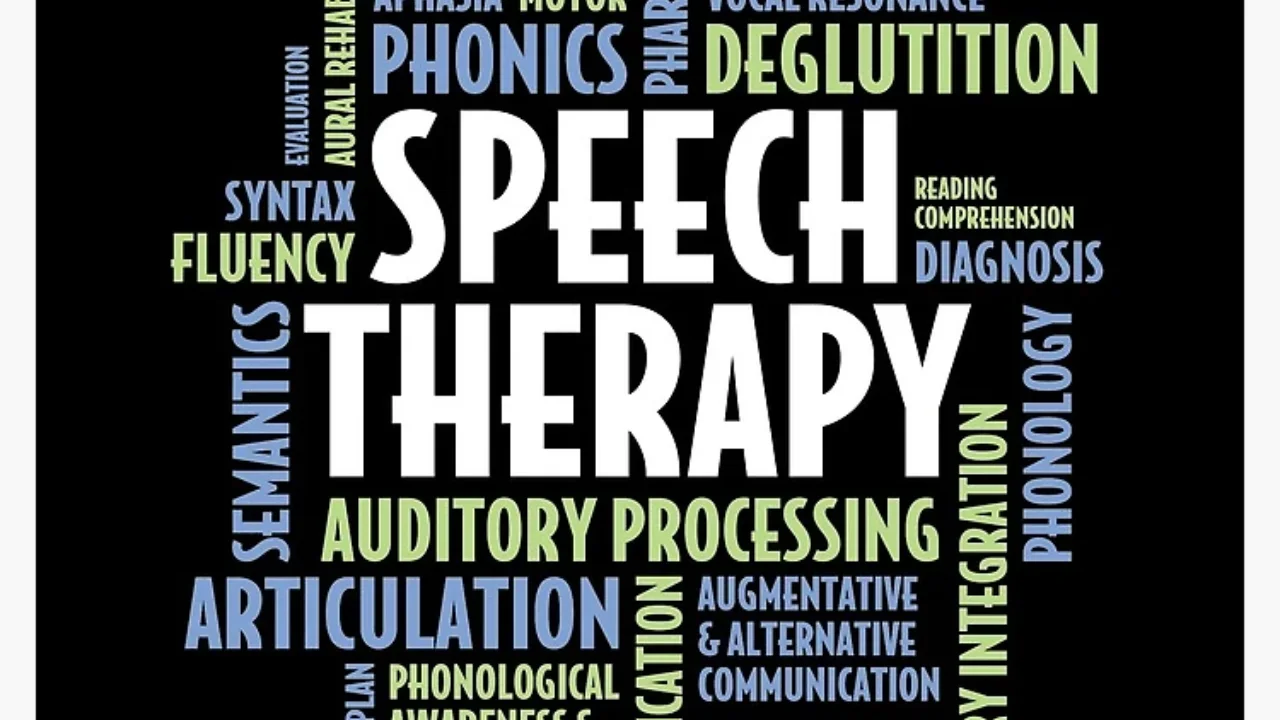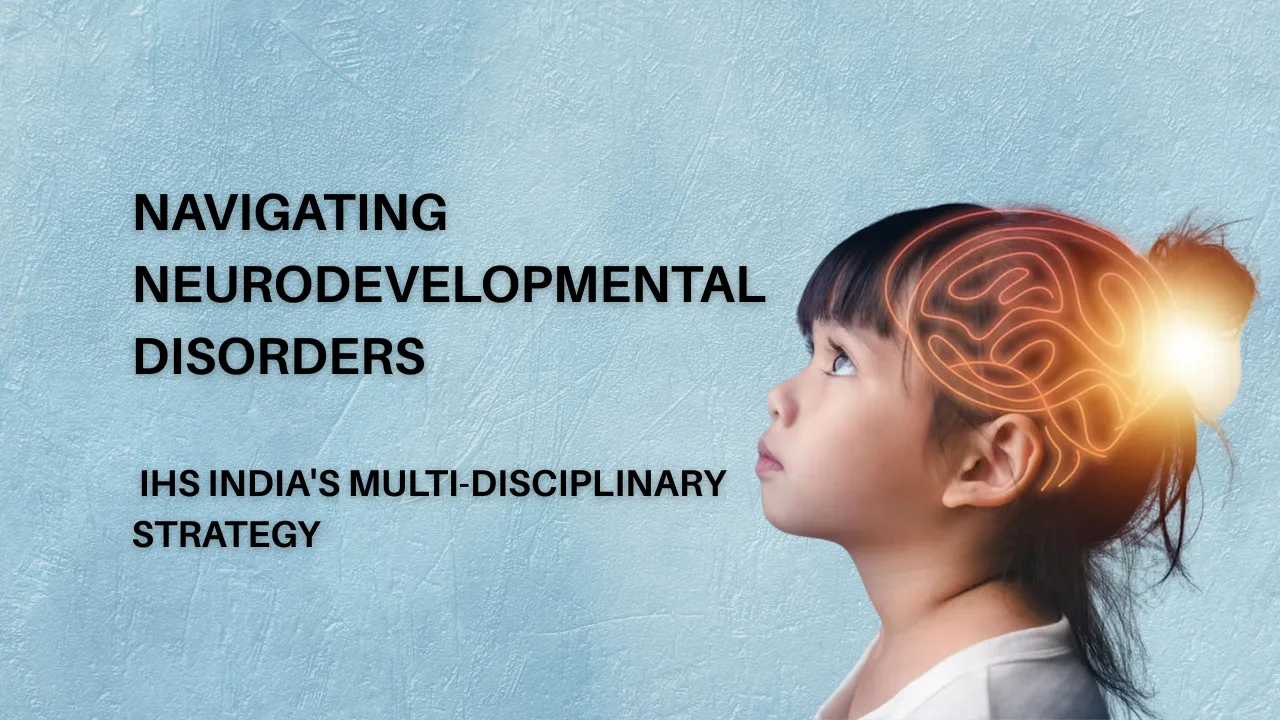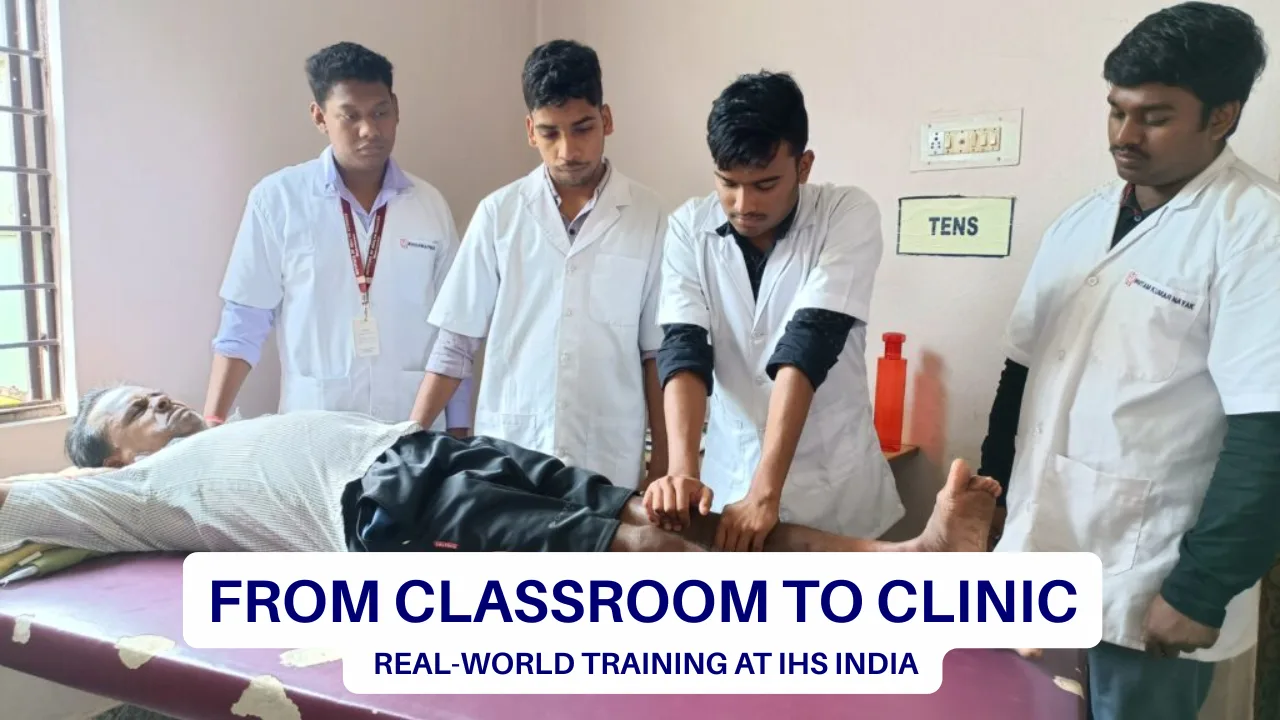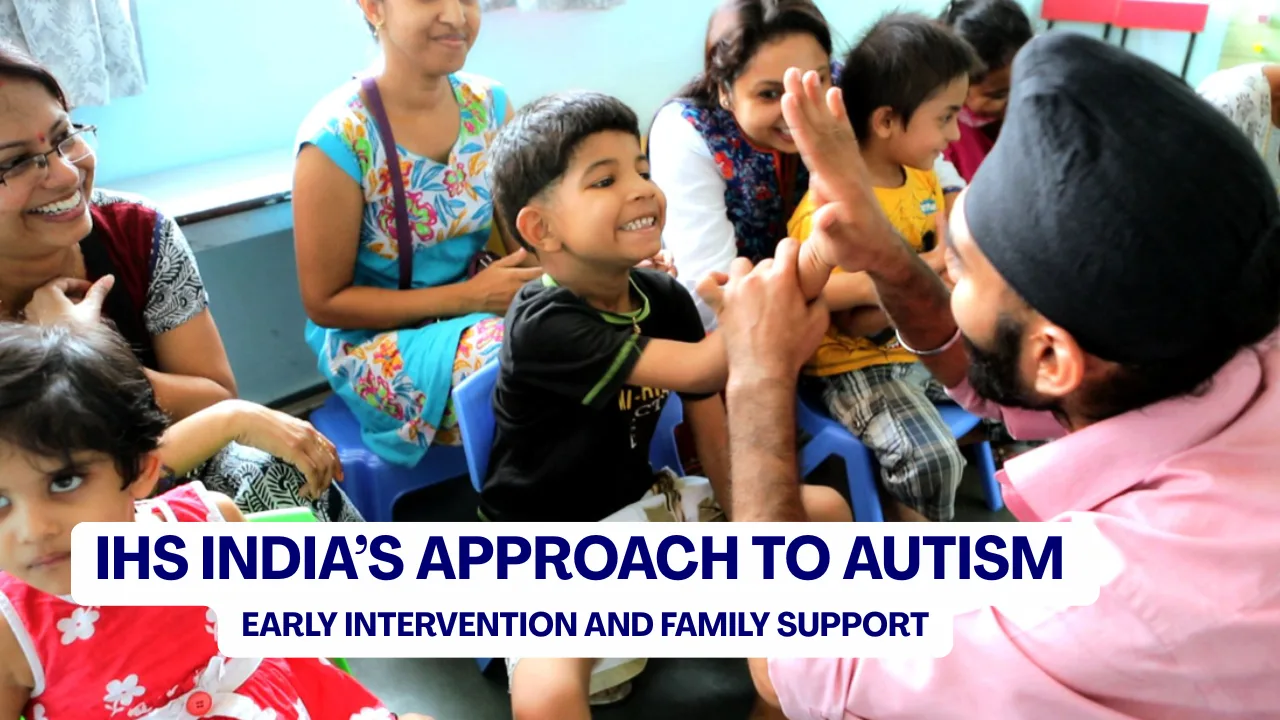Inclusive Design Thinking in Therapy: Inclusive Design Thinking in Therapy is changing how the healthcare and rehabilitation sectors operate. In today’s evolving therapeutic environment, professionals are expected to not only treat but to deeply understand the unique challenges of individuals from all walks of life. With inclusion becoming a central value, designing therapy that respects every patient’s needs is no longer optional—it’s essential.
This article explores how IHS India has pioneered a progressive approach in their health sciences education. Their curriculum emphasizes user-centered learning, practical skill-building, and inclusive thinking. We’ll examine how their model shapes empathetic and effective therapists, the specific practices that make their training distinctive, and why it’s positioning IHS India as a leader in healthcare education reform.
Inclusive Design Thinking in Therapy
Inclusive Design Thinking in Therapy is a powerful shift in how therapy is imagined and delivered. At its core, it combines the human-centered mindset of design thinking with therapeutic techniques that ensure accessibility and personalization for all. IHS India trains students to be more than just providers—they become co-creators in healing, working alongside patients from diverse backgrounds to design better health solutions. This inclusive model leads to richer patient experiences and smarter outcomes, setting new standards in the therapy education landscape.
Overview of IHS India’s Inclusive Education Model
| Aspect | How IHS India Approaches It |
| Curriculum Integration | Inclusive design principles are embedded across all programs |
| Learning Methodology | Project-based, patient-focused, experiential |
| Clinical Training | Real-world exposure to diverse patient populations |
| Faculty Approach | Mentorship that promotes empathy, reflection, and innovation |
| Student Engagement | Encourages collaboration, critical thinking, and feedback cycles |
Understanding Inclusive Design Thinking in Therapy
Inclusive design is not just about accessibility—it’s about active empathy and removing barriers before they appear. In the therapy space, this means creating strategies that can adapt to different abilities, cultures, and contexts. The process involves co-designing therapeutic journeys with patients, recognizing that no two recovery paths are identical.
At IHS India, inclusive design isn’t taught as a theory but as a practice. Students learn to see through the lens of the user. Through real case simulations and inter-professional dialogues, they are trained to think critically and modify therapies that truly suit the individual’s needs—not just their condition. This commitment makes inclusive design thinking a core strength in their clinical and academic strategy.
IHS India’s Unique Approach
What sets IHS India apart is the way it transforms therapy education into a participatory and reflective practice. Inclusive healthcare isn’t limited to policy discussions in classrooms—it lives in every assignment, clinical rotation, and discussion. Whether it’s occupational therapy, speech-language pathology, or physiotherapy, every subject integrates the logic of user-centered design.
Students work with a diverse range of patient profiles, including individuals with disabilities, elderly patients, and culturally diverse communities. This creates a deeply immersive learning environment. Faculty act as guides, not just instructors, supporting students as they learn to adapt, question, and grow. The school encourages an environment where failure is seen as a stepping stone toward better design, and reflection is part of daily learning.
How Students Learn User-Centered Therapy
In user-centered therapy, the patient’s voice is central. Students are taught to begin every interaction by asking: “What does healing look like for this person?” Instead of using rigid treatment frameworks, they learn to co-create solutions with patients. IHS India trains its students to be listeners first and problem-solvers second.
Interviews, patient storytelling, shadowing sessions, and reflection journals are all used to understand the real experiences of those in care. This results in therapists who don’t treat symptoms in isolation but look at the broader social, emotional, and environmental context. Such a holistic lens ensures that therapy not only works but feels supportive and sustainable to the patient.
Key Practices IHS India Emphasizes
- Interactive Workshops and Real-World Case Studies:
Learning is based on live patient interactions and peer collaboration. Workshops explore real clinical scenarios where students must design accessible therapy solutions based on a given patient profile. This encourages creativity and hands-on learning using inclusive design frameworks. - Inclusive Assessments and Feedback Systems:
Feedback is collected not just from faculty but also from patients and clinical supervisors. This 360-degree model ensures that students constantly improve and develop more sensitive and personalized therapeutic skills. Patient satisfaction and trust become key indicators of success.
Benefits of Learning Inclusive Design in Therapy
Learning inclusive design benefits students far beyond academic performance. Therapists trained with this mindset are better at adapting to real-world challenges. They’re able to adjust their methods based on different needs—whether it’s for someone recovering from a stroke, managing chronic pain, or living with cognitive impairments.
Employers increasingly seek therapists who can connect across cultures, age groups, and ability levels. The emphasis on design principles in therapy education also equips students with problem-solving skills that extend to public health, rehabilitation planning, and even health tech development. With such training, graduates are ready not just for clinical jobs but also for leadership in innovation and policy change.
Real-Life Impact of IHS India’s Model
Graduates from IHS India often report how their training helped them build trust with patients quickly and deliver more tailored care. In clinical settings, they’re known for their creativity and adaptability. For example, one alumnus developed a communication board for stroke patients based on inclusive design principles—a project now used in several clinics.
Their model is proof that when students are taught to view patients as partners, outcomes improve. The ripple effect of this training touches community health programs, rural outreach initiatives, and even advocacy efforts to improve accessibility in healthcare.
Why Inclusive Design Thinking is the Future of Therapy
Healthcare is becoming more complex and personalized. The one-size-fits-all approach simply doesn’t work anymore. Inclusive Design Thinking in Therapy prepares professionals to face this challenge with intelligence and compassion. It teaches them to see people, not problems.
IHS India isn’t just teaching therapy—it’s redefining what it means to care. Their commitment to inclusive healthcare education is paving the way for a future where everyone, regardless of their background or ability, receives therapy that fits their life, not just their diagnosis.
FAQs
What does inclusive design mean in therapy?
It means designing therapy approaches that adapt to the needs of each individual, ensuring that treatment is accessible, respectful, and effective for all.
How does IHS India implement inclusive design?
They embed it throughout their curriculum using practical training, patient-centered assessments, and real-world problem-solving exercises.
Why is user-centered design important in therapy?
It leads to better patient outcomes by involving the user in their own care journey, which increases engagement and satisfaction.
Are inclusive therapy methods only used in rehabilitation?
No, they can be applied across all areas of healthcare including mental health, pediatric care, and community health programs.
Can this approach help underserved communities?
Yes, inclusive therapy is especially beneficial for underserved groups, as it removes systemic barriers to care and prioritizes accessibility.
Final Thought
Inclusive Design Thinking in Therapy is not just a teaching module—it’s a mindset that transforms how care is delivered. IHS India’s commitment to this approach is equipping the next generation of therapists with empathy, creativity, and deep clinical insight. If you’re someone who believes that care should be as unique as the person receiving it, then this model is worth understanding and spreading.
Want to explore more about your place in healing or innovation? Check out your horoscope or explore more articles on progressive healthcare education. And don’t forget to leave a comment—your thoughts matter.
